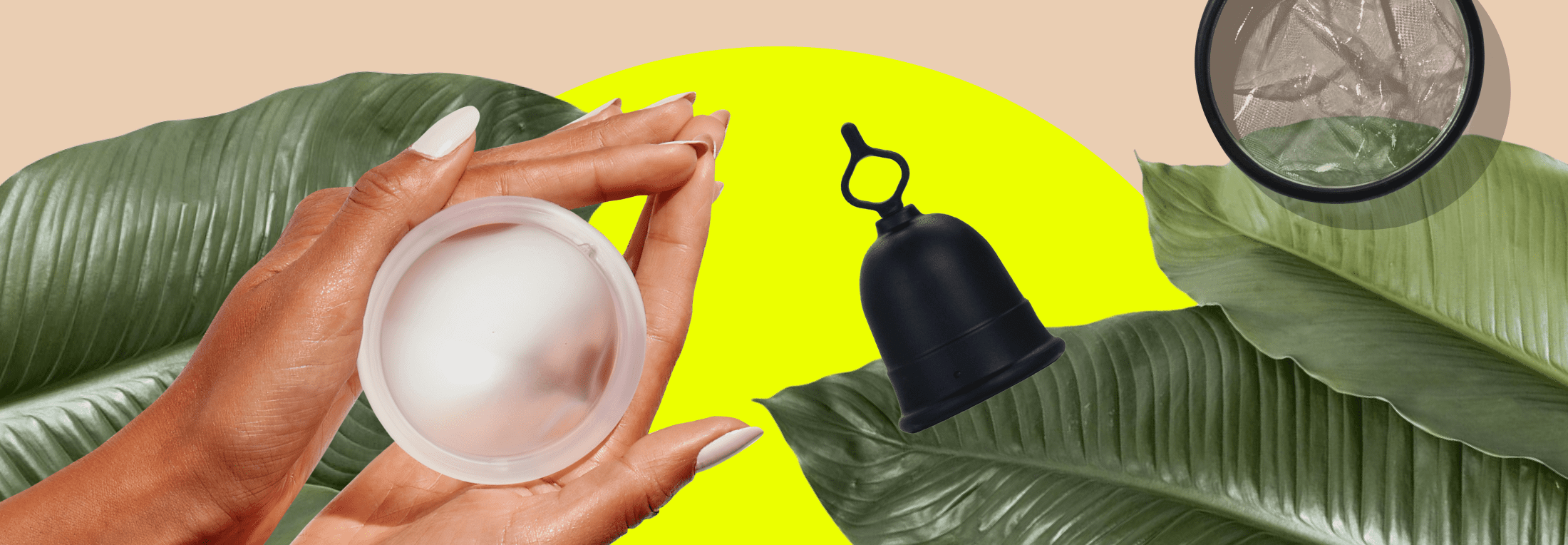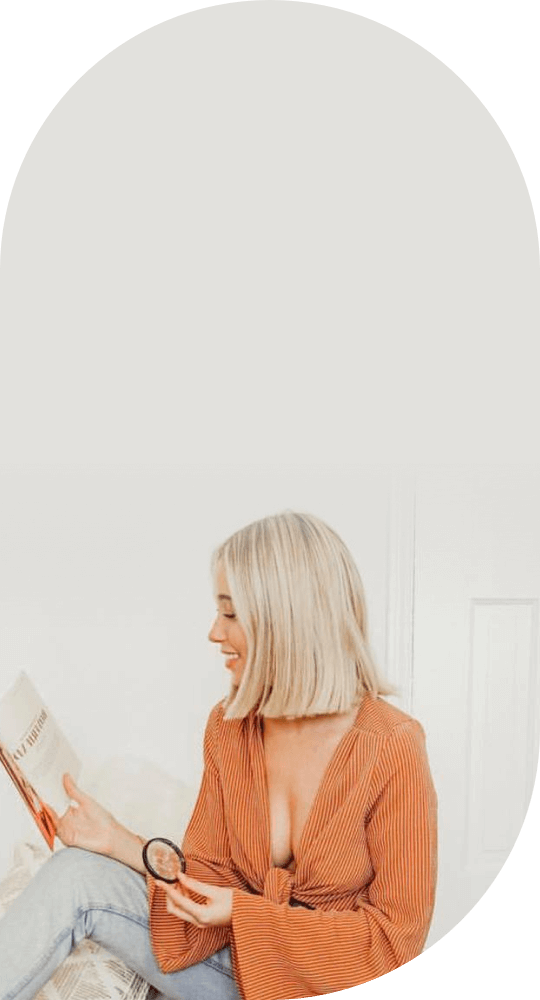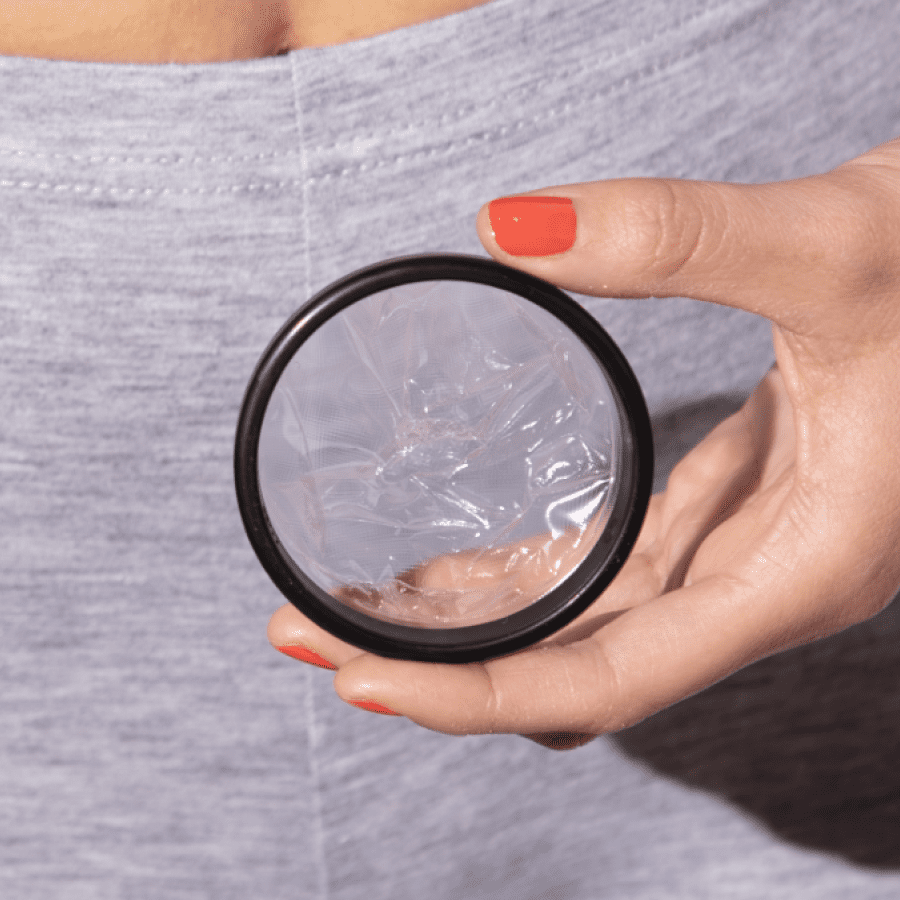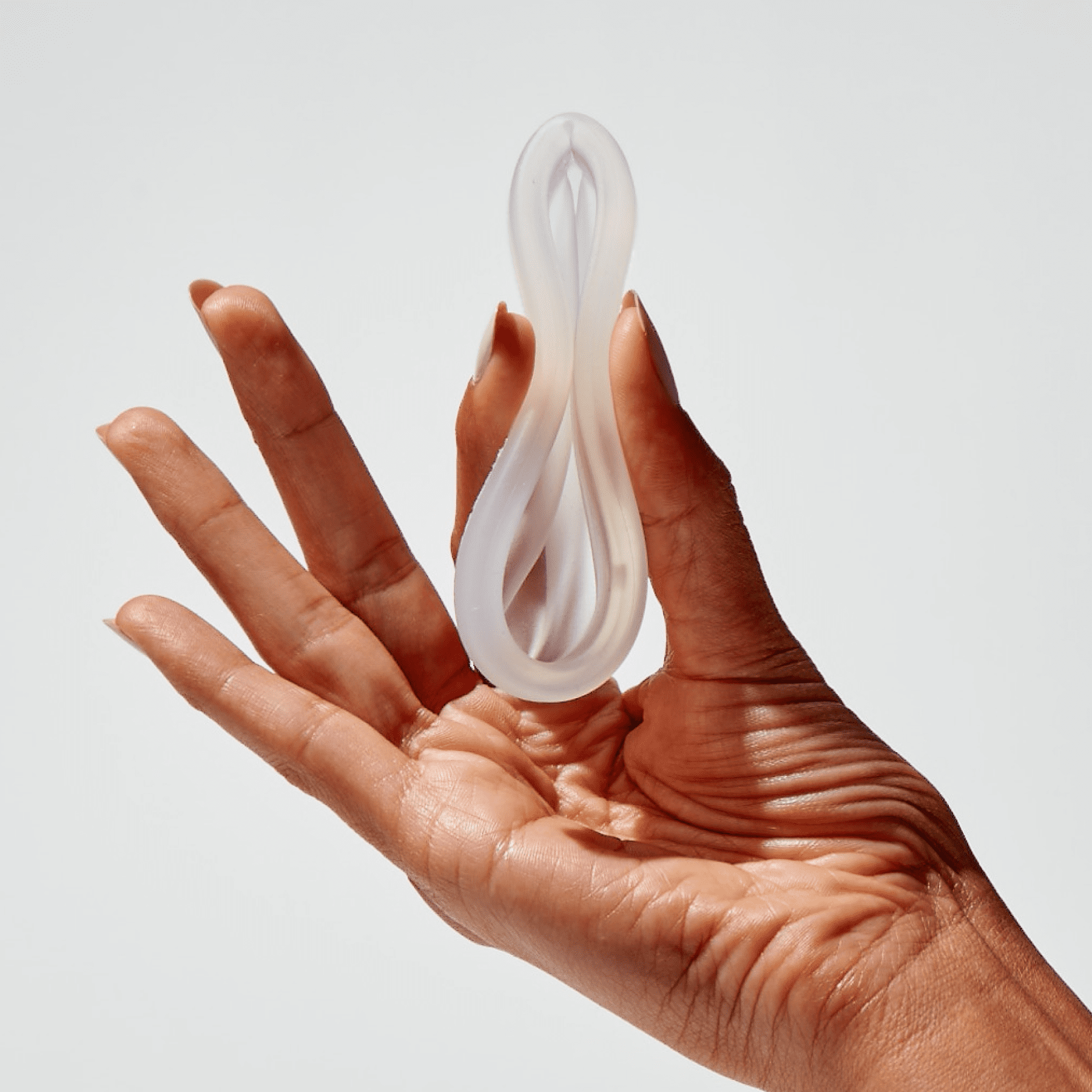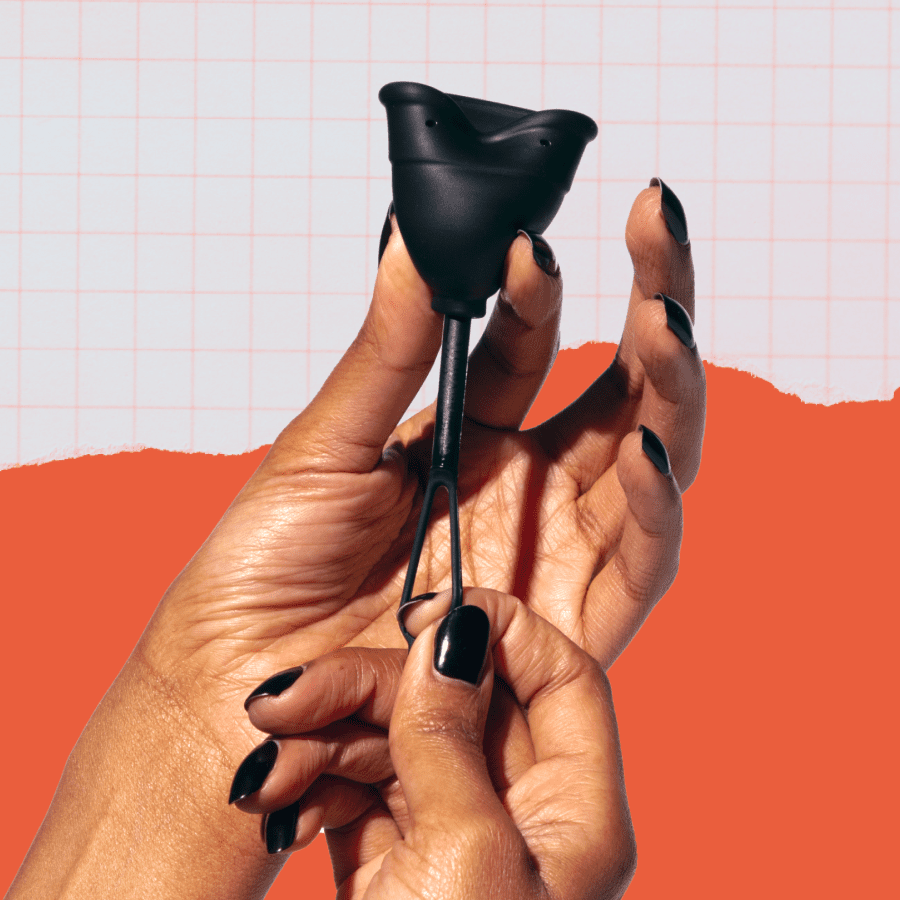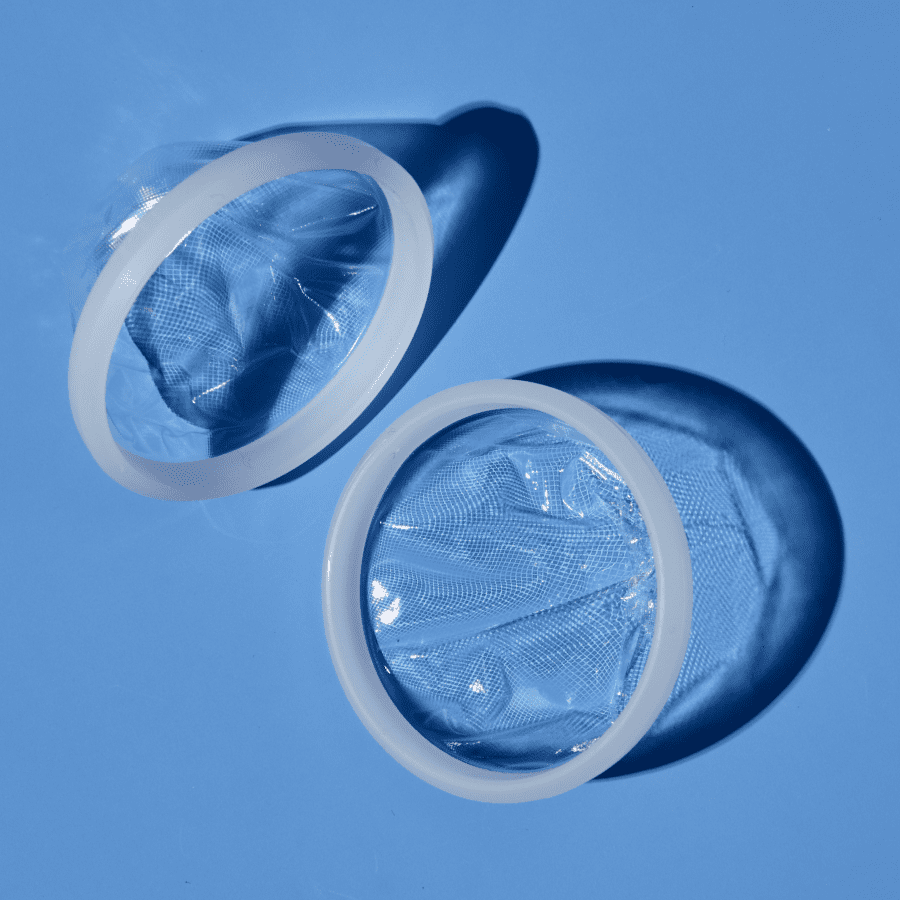Flow with Mother Nature: 9 Ways to Make Your Cycle Greener (Before Earth Day)
Happy Earth Day, party people. Every April 22, Earth Day celebrates the start of the modern environmental movement that began in 1970, resulting in the founding of the US Environmental Protection Agency and the passing of pioneering environmental legislation.
In the midst of our current climate crisis, it’s never been as important to be good stewards of this floating mass billion of people call home. Aside from participating in earth day activities, why not make your period more sustainable?
If you’re anything like us, you might like to slow things down a bit during your period week. When that PMS fatigue sets in, the last thing you want to do is put on real clothes and leave the house… which means it’s a great time to relax, put down the to-do list, and catch up on sleep.
It could also mean snacking on a few more packaged foods than usual, going through double the amount of toilet paper, and spending a couple extra hours glued to the couch with three different electricity-sucking devices turned on at once. Because FaceTiming your BFF while simultaneously online shopping and catching up on the last season of Summer House is the only way to survive those day-one cramps.
Good for your mental health? In a way, yes. But not so good for Mother Earth.
But hear us out: You actually can help save the planet without foregoing all of your period week self-care rituals. It’s all about balance.
You can have your Oreos and peanut butter, but remember to recycle the packaging. You can binge-watch all you want, but make sure you unplug your other devices and turn off the lights while you do so. It’s all about making sustainable choices.
How eco-friendly and reusable period products are saving the planet, one menstrual cycle at a time
Old-school pads and tampons are still the most widely-used period products out there. They also happen to be single-use products and can take hundreds of years to fully decompose in a landfill.1 Not only do tampons and pads themselves get tossed in the garbage, but so do their wrappers and applicators—which are also frequently made out of plastic.
The average menstruator uses anywhere from 11 to 30 tampons each cycle.2 That translates to between 5,000 and 14,000 tampons used over the course of a lifetime. Add in pads, liners, and other non-biodegradable period care products, and we’re looking at an unbelievably large quantity of waste that won’t be even a quarter of the way decomposed by the time you hit menopause. This, understandably, only adds to the global plastic waste problem.3
Thankfully, the menstrual care industry is moving towards the circular economy, promoting growth without the use of limited resources. Today, brands like Flex® are offering consumers a wider range of more sustainable eco friendly menstrual products, including menstrual cups, reusable pads and liners, and even period underwear.
Switching to recyclable or reusable period products is a great way to reduce your environmental footprint. You can also take many other steps during your period that require very little effort. These steps might even make your period less of an inconvenience.
In the spirit of keeping our world happily revolving around the sun for a few more millennia, here are nine ways to have a greener period, including earth day product recommendations.
1. Take Flex Menstrual Cup or Flex Menstrual Disc for a spin
We can’t talk about greener periods without mentioning Flex Cup™, our personal favorite menstrual cup (okay, we might be a little biased) with a patented pull-tab that breaks the suction seal for you, making it as easy to remove as a tampon.
Flex reusable menstrual disc is another equally fantastic option. They sit further back in the vaginal canal—so once it’s in, you can’t feel it, and it collects, rather than absorbs, your period. You might even forget you’re on your period. They are 100% reusable and can last for years!
But for us, the real win for both, the menstrual cup and the menstrual disc, is that they can be worn for up to 12 hours. That’s eight more hours of no-stress wear than most of us can get out of the average tampon or pad.
Both, Flex Cup and Flex Disc can be worn while swimming, exercising, or sleeping, and are an excellent reusable option for anyone with a hectic lifestyle. If you’re someone with a disability or mobility issues, the Flex Cup’s pull-tab was created with accessibility in mind so that menstruators with limited dexterity would have no problem using it.
It might take you one or two cycles to get the hang of inserting a menstrual cup or disc, but once you’ve got your tactic down, you’ll be able to bask in the freedom of never buying another box of disposables…ever again. Flex cups and discs will hold up for years, especially with proper care and cleaning. Win for your wallet, win for the planet.
Here’s a pro tip from the Flexperts: Before you buy a menstrual cup, do plenty of research to make sure the one you choose is a good fit for your anatomy (i.e. the position and height of your cervix) and your flow (whether light, medium, or heavy).
Flex Cups and discs are made of 100% medical-grade silicone. Flex discs are available in one size and flex cups are available in two sizes. When it comes to Flex Cups, we recommend the 01 for first-time cup users, teens, and people who haven’t given birth vaginally—but if you have a super-heavy flow, the 02 might work better for you even if you’re a newbie.
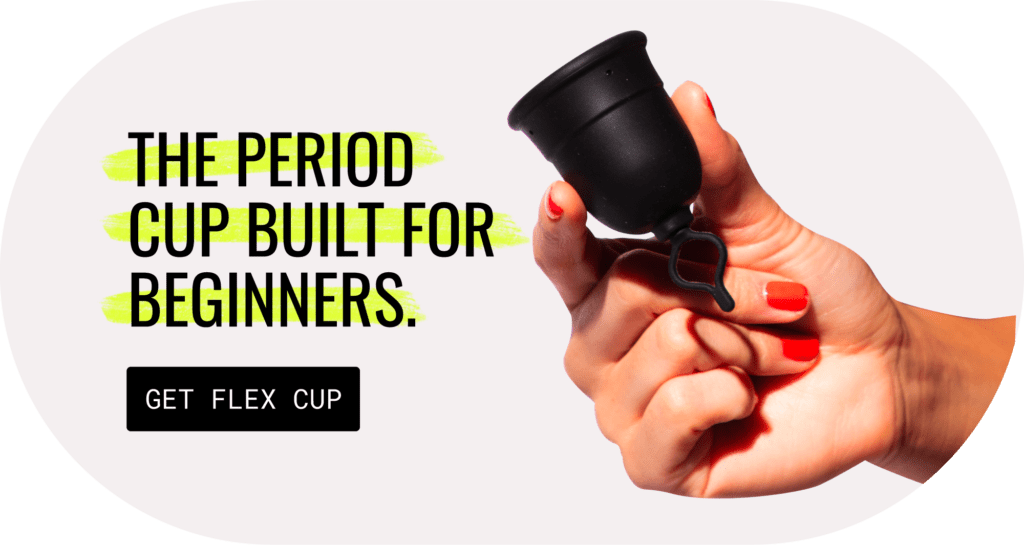

2. Change your period product in the shower
While we’re on the topic of menstrual cups, a great way to be kind to the planet during your period is by waiting to empty and reinsert your cup until you’re in the shower. This helps save the toilet paper or wipes that would otherwise have been needed to clean up your vulva and tackle any spillage (if you know, you know).
For some, changing their menstrual cups in the shower also makes insertion and removal easier, since the warm water helps your pelvic floor muscles relax and a slightly damp cup will glide right into place—just make sure your cup isn’t full of water!
Same goes for changing your menstrual disc, if you’re a Flex Reusable Disc™ user, taking out your used disc in the shower eliminates the risk of accidentally staining your favorite bathroom rug—and also simplifies the ‘down-there’ cleanup. For environmental bonus points, turn off the shower while you reinsert your menstrual disc or cup to conserve water.
If you want to up your cleaning game in the shower, check out our brand-new Foaming Cleanser. We designed the wash to be a multitasking bathroom hero: It not only gently but effectively cleans your menstrual cup in between wears, but it’s also safe to use on your entire body. Vulva, butt, armpits, elbows, and shoulders included. Plus, it’s made with 100% natural ingredients, is pH-balanced and OB-GYN-approved, and smells incredible.
3. Install a bidet
Between period poops and menstrual blood, the amount of toilet paper we’re accustomed to using during our period could be nearly twice as much as the amount you use during the other phases of your cycle. TP, in general, isn’t doing our planet (or your plumbing) any favors. And we can’t always time our showers with our period product changes (see above). So why not stop using it altogether?
No, we’re not talking drip-drying every single time or leaving that area “au naturale” post-toilet. For the sake of your vaginal health, def don’t do that! We’re talking about making the switch from the cleaning power of paper to the far superior cleaning power of water.
Bidets have been used in Europe and parts of Asia for generations, and it’s about time the US started to catch up. Today, they can be installed as a standalone device in your bathroom or even as a much-less-expensive toilet attachment. Bidets work by spraying your butt and/or vulva clean with a stream of fresh water (even warm water is an option on some models!) that you switch on and off with a control panel.
A bidet is way kinder on the environment than traditional toilet paper. They’re also kinder on sensitive genital tissue and actually clean better than traditional toilet paper (win-win!). Consider joining countries like Italy and Japan and install a bidet in your home for a greener period—and a greener bathroom, in general.4
4. Switch to plant-based wipes
If you’re intimidated by the thought of using a menstrual cup or disc when out and about, you’re definitely not alone. Trust us, we’ve all been there during that slightly awkward moment when there’s no other option but to use a sink in a public bathroom (with a line of people standing there, judging you) to wash it out between use.
That moment was part of what inspired us to create our plant-based Flex Wipes. We wanted to give our customers the opportunity to take Flex Cup and Flex Reusable Disc on the go without a worry in the world, even on their heaviest days. Plus, these are no ordinary “feminine wipes”—we designed them to be good for you and the planet.
We tested them and tested them again, making sure that our design would be biodegradable when flushed. Another plus: Flex Wipes can also be used on your entire body to freshen up after a sweaty workout, a long day at work, or a long night between the sheets 😉.
5. Try on a pair of period-absorbing underwear
Circling back to sustainable period product choices, let’s talk period undies: They’re a great entry point into the world of reusable menstrual products, are perfect for overnight wear, and are more versatile than you might have thought.
For example, many people trying out a menstrual cup or disc for the first time like to use a pair of period underwear as backup to absorb leaks. Like it or not, leaks happen to all of us at some point—especially on those waterfall-heavy-flow days. Using an extra form of protection makes it easier to conquer those 12-hour shifts or long days in class with total confidence.
And unlike traditional liners, cloth pads and period underwear can be washed and reused many times (the exact lifespan varies by brand). They also typically offer a much higher absorbency than liners or pads, making them great for those overnights when you just need to sleep in. Do some research before you buy and look for a brand that’s sustainably manufactured and free of PFAs or other chemical treatments.
6. Consider reusable pads or liners
If you’re a menstruator who prefers using pads over (or in addition to) tampons, why not try out reusable pads? Similar to period underwear, reusable pads and liners can be washed and worn again after use. Instead of sticking to your underwear with a strip of adhesive, they typically use snaps or ties to hold them in place.
Reusable cloth pads are a great option for those who want a more sustainable period product but who aren’t able to or don’t feel comfortable inserting something into the vagina. If you’re worried they’ll feel like wearing a wet diaper around all day, rest assured that there are some pretty high-tech options on the market today: Many feature moisture- and odor-trapping fabric that make them just as comfortable as regular, disposable pads.
The advantage to reusable pads when compared to period underwear is that they tend to offer a bit more versatility: You can wear them with any pair of underwear you own, even that super comfy high-rise pair that you break out specifically for those days when your cramps are horrible.
They also tend to be more breathable and easier to clean (can machine wash and toss in the dryer, as opposed to hang-drying).
7. Use a tampon without an applicator
If you’re a forever tampon stan, we get it: Breaking out of your period product routine and switching to a fully reusable product isn’t always easy. And for some, it might not be feasible, whether that’s due to a health condition, your job or day-to-day activities, or something else.
But if you’re willing to make a few simple swaps, you can keep your tampons and still ditch all that plastic waste. Enter the applicator-less tampon.
The first time I saw a tampon box overseas, I was so confused about how such a tiny box could fit so many tampons. It turns out, in places like Europe, tampons are usually sold without applicators: You use your fingers for insertion. While that concept might not seem so crazy today, applicator-free tampons were barely making an appearance at US pharmacies even ten years ago.3 Nowadays, that’s starting to change–and we’re seeing a whole host of products on the market that require “insertion by hand.”
Despite what we’ve been socialized to believe, period blood isn’t gross! There’s nothing wrong with using your fingers to insert a tampon, menstrual cup, or menstrual disc. All it takes is a quick wash with soap and water, and you’re back to your regularly scheduled programming. If for any reason you cannot insert your tampon by hand, there are also good reusable tampon applicators available in the market.
8. Invest in black eucalyptus bed sheets: Overnight free bleeding FTW!
Period leaks are no fun in general, but bleeding through your PJs and staining your sheets is absolutely the worst. For anyone who may be curious about free bleeding, consider investing in a set of black eucalyptus sheets to use during your period (coupled with a mattress protector). The dark color conceals any stains and is convenient to launder and tumble dry.
Why eucalyptus fabric, and not something like cotton? Eucalyptus plants are more environmentally friendly than cotton since they require less water to cultivate. Plus, it just so happens to be moisture-wicking and antimicrobial. So you can keep right on sleeping naked throughout your period with no worries about getting up in the middle of the night to change your tampon.
If you’re thinking, okay, this all sounds great, but what about my mattress? That’s where the mattress protector comes in. Either invest in one that’s waterproof or explicitly designed for use during your period, like this one by Cycleliners, or throw an old towel down underneath (or on top of) your black sheets.
9. Curb your cravings with sustainably sourced, Fairtrade-certified chocolate
The cocoa industry is growing but, sadly, many producers engage in not-so-ethical practices when it comes to harvesting and manufacturing the chocolate that we all tend to crave during our period. The cocoa industry is responsible for a sizable portion of the deforestation that’s occurred over the past several decades: According to the WWF, “Experts estimate that 70% of the country’s illegal deforestation is related to cocoa farming.” 5
Thankfully, some chocolate makers are initiating change, choosing to work only with producers who engage in planet-friendly cocoa harvesting practices. Next time your period rolls around, consider switching from the name brand you typically grab and hunting down a sustainably sourced bar in the candy or baking aisle: We love Endangered Species Chocolate, Brooklyn-based Raaka Chocolate, and Dandelion Chocolate.
Key takeaways
Maybe you’re not yet comfortable with the idea of a menstrual cup or the idea of free bleeding at night freaks you out. That’s totally fine. You can still make choices that help the planet, such as reusable tampon applicators or organic cotton tampons or pads. No one has quite the same cycle or flow, so it’s understandable that we each have different needs when it comes to menstrual products and practices.
No matter how you menstruate, we hope that you’ll try out at least a couple of the tips above during your next period. And if you want to invest in our planet and take the plunge into perhaps the most eco-friendly category of period products, menstrual cups, we hope you’ll consider Flex Cup. Here’s to a planet that nurtures us for centuries to come—and to less wasteful, more sustainable periods!
© 2023 The Flex Company. All Rights Reserved.
- Peberdy, E. (2019, January 17). A study into public awareness of the environmental impact of menstrual products and product choice. MDPI. https://www.mdpi.com/2071-1050/11/2/473/htm[↩]
- Chase, D. J., Schenkel, B. P., Fahr, A. M., Eigner, U., & Tampon Study Group (2007). A prospective, randomized, double-blind study of vaginal microflora and epithelium in women using a tampon with an apertured film cover compared with those in women using a commercial tampon with a cover of nonwoven fleece. Journal of Clinical Microbiology, 45(4), 1219–1224. https://doi.org/10.1128/JCM.02156-06[↩]
- How tampons and pads became unsustainable and filled with plastic. (2019, September 6). National Geographic. https://www.nationalgeographic.com/environment/article/how-tampons-pads-became-unsustainable-story-of-plastic[↩][↩]
- Wipe or wash? Do bidets save forest and water resources? (2009, December 16). Scientific American. https://www.scientificamerican.com/article/earth-talks-bidets/[↩]
- World Wildlife Fund. (2017). Bittersweet: Chocolate’s impact on the environment. https://www.worldwildlife.org/magazine/issues/spring-2017/articles/bittersweet-chocolate-s-impact-on-the-environment[↩]
